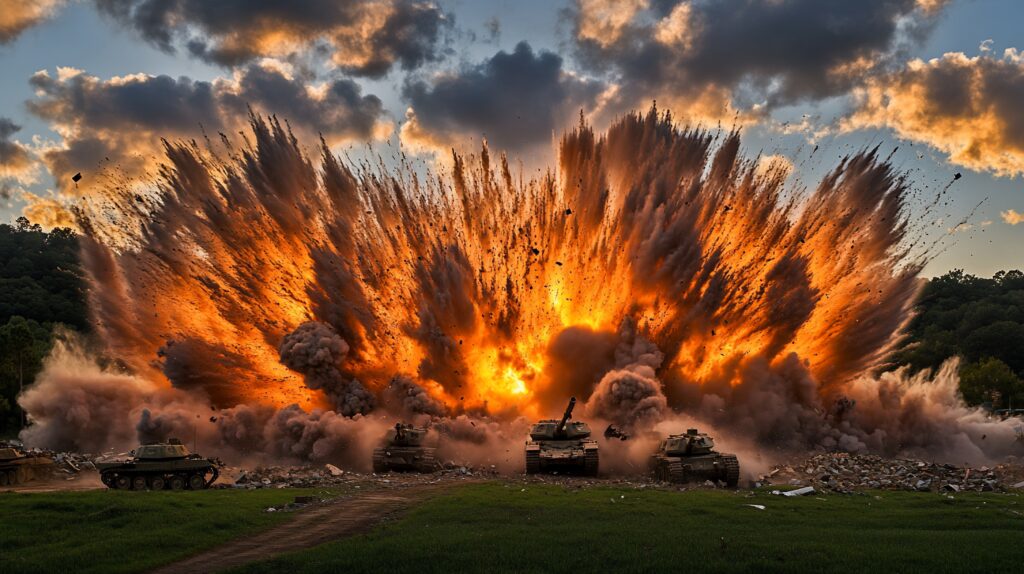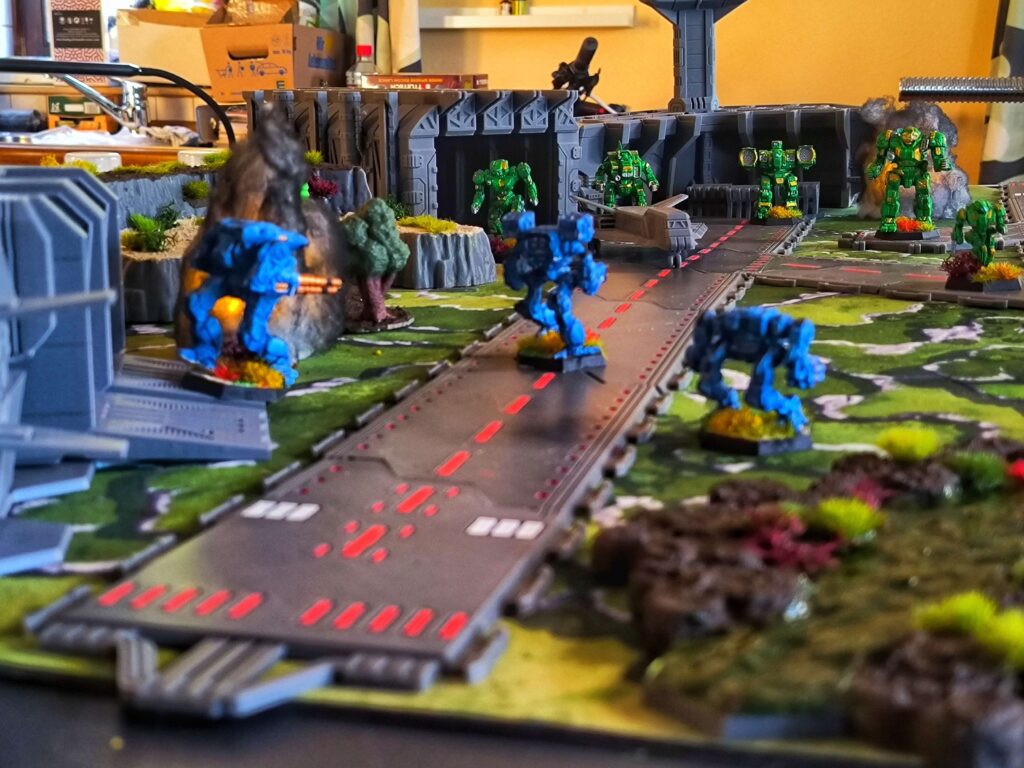Target prioritization in BattleTech Alpha Strike: Using tactics, timing and firepower effectively
In BattleTech Alpha Strike, the battlefield is often more complex than it seems at first glance. If you want to be successful here, you not only need to know which unit does how much damage or how fast it is – but above all which target should be attacked when and why. This procedure is called target prioritization.
In this article, you will learn how to effectively integrate objective prioritization into your game, how to concentrate fire, activate units in the right order and thus drastically increase your chances of victory.

Why target prioritization makes the difference
Too often in games you see players shooting at the next best or most obvious target – not the most relevant one. If you learn to choose your targets wisely, you can not only weaken your opponent’s combat strength more quickly, but also disrupt their mission progress.
The aim is to eliminate important enemy units before they can develop their full potential – and at the same time protect your own key units.
Step 1: Which goals are important? The choice when prioritizing goals
Every game is different – mission, terrain, armies and turn order influence the priorities. Nevertheless, there are some categories of units that should almost always be in focus. :
1. Scorer – Eliminate scorers
Ask yourself: Which enemy units allow my opponent to fulfill mission objectives?
These are particularly critical in scenarios such as “Capture the Flag”, “Breakthrough”, “Salvage” or “Capture”. Fast mechs, hovercrafts or transports with infantry can score points quickly here – deprive them of this ability by taking them out early or restricting their freedom of movement.
2. Threats to your own scorers
Turn the perspective around: Which enemy units endanger my point collectors?
Even if they are not currently causing any damage, they can intercept or block your fast units. It is often worth planning one or two moves in advance and “clearing paths”.
3. Reduce damage output – switch off heavy hitters
Units that deal consistently high damage (e.g. LRM carriers, Shrek PPCs or heavily armed mechs) are particularly dangerous – if they also have low hit points and/or low TMM values, they are a very worthwhile target. Also pay attention to units that you have identified as your opponent’s“center of gravity”.
Tip: If you can take out 20-25% of your opponent’s firepower in one hit, this changes the course of the game dramatically – especially in early turns.
4. Count wounds – finish off wounded units
A mech with only one structure point left that still does 4 points of damage at medium range? You should remove it immediately before it shoots one last time. Many players leave such targets lying around – a mistake.
Avoid leaving half-destroyed opponents standing. Their damage remains the same as long as they have no critical hits.
5. Targets with high TMM at close range (short)? Strike!
If fast units with high TMM (e.g. hovercrafts or scout mech units) come too close to you, this is often the only opportunity to deal accurate damage. Use “close range + low TMM = good chance of hitting”. These units often have little armor – and are then off the field in one hit.

Step 2: Sequence of shot activations for target prioritization
Many players activate their units in turn order – left to right, or simply as they stand. This wastes tactical potential.
Basic rule:
First activate units that can only see a single target.
Why? Because their damage can otherwise be wasted if the target has already been destroyed before they were allowed to fire. As soon as you activate units with multiple target options, you can switch as required – depending on what has already been eliminated.
Special case: units with indirect fire
These units usually have many targets to choose from. Indirect fire often reaches a large part of the battlefield. It is therefore difficult for an opponent to protect his units from it. Use indirect fire at the end of the activation phase (i.e. as the last units to shoot) to finally destroy previously damaged opponents and thus remove them from the field. Alternatively, you can use it specifically to “damage” enemies early on so that your other units can destroy them later.
Important: Don’t forget the spotting penalty if you are planning indirect fire!
Step 3: Concentrate the fire – do not scatter it
The biggest problem for many players is that they distribute damage evenly across many units. This means that all opponents survive and can strike back.
Better: Focus fire
Concentrate your attacks on a target until it is destroyed – especially with dangerous or damaged units. Even large targets such as an Atlas can quickly disappear from the field with enough focus fire.
It is better to completely eliminate one unit than to half-damage three units.
Use terrain and movement to create “fire corridors” in which several of your units can attack the same target without being shot back.
Step 4: Psychological warfare – “table talk” as a tactic of target prioritization

Sounds crazy? But it’s effective:
- A casual “The Atlas only has 4 hit points left…” can tempt the enemy to fire at the target you deliberately offered as bait.
- Or you emphasize how dangerous a unit is, even though your “real target” is somewhere else on the field.
Of course you shouldn’t lie or use other unfair methods – but you can communicate tactically. Many players make more spontaneous decisions when they are under emotional pressure. I have written more about this in the article “Psychological warfare”.
Step 5: Counter-strategies – If the opponent prioritizes his goals well
If your opponent knows exactly what to shoot at, you can use the following methods to make life difficult for him:
- Use decoy units: Offer targets that look dangerous but are expendable to you.
- Cover and movement: Hide your scorers so that they receive as little enemy fire as possible.
- Target flooding: Present many similar targets at the same time to make it more difficult for the opponent to choose.
- Force fire distribution: Pull the enemy army apart with skillful movements on the field. While keeping your shots concentrated.
Conclusion: Target prioritization is not a coincidence – but a core competence
Objective prioritization is not a minor matter, but a central component of your winning strategy in BattleTech Alpha Strike. If you master it, you can win with smaller armies, force surprising turns and outmaneuver your opponents.
Remember the four golden rules:
- Prevent opponent scoring.
- Protect your own scoring.
- Eliminate dangerous units early.
- Concentrate fire instead of scattering it.
You’ll get better at it with every game. And soon you will no longer just win by chance – but because you are tactically superior.



